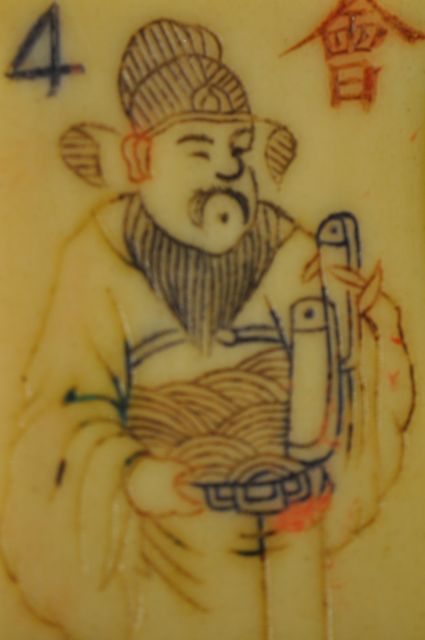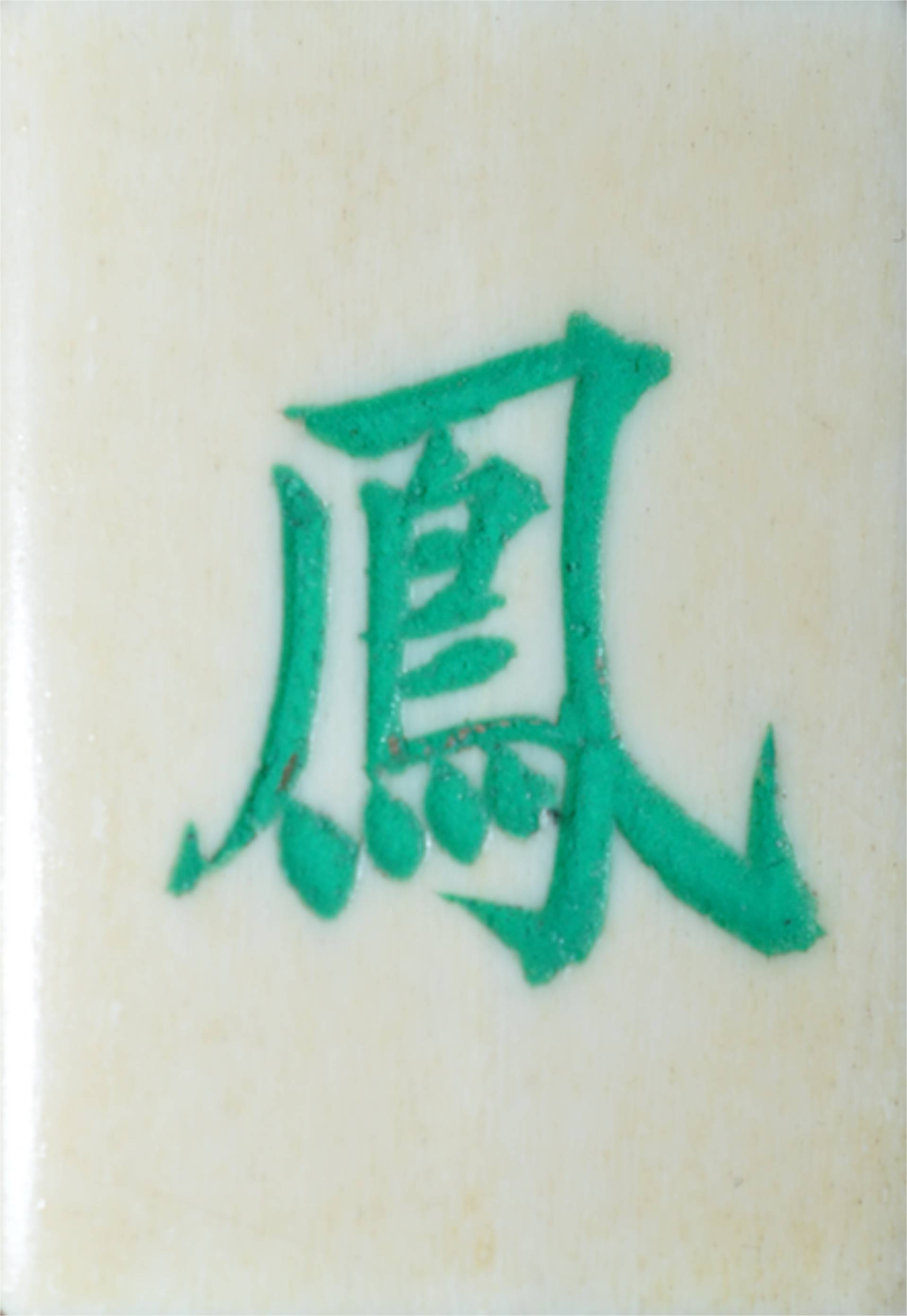I am ending the year on a very wishful note. This delightful ebonized box with mother-of-pearl inlay has five stylized bats on the front panel, and another five on the top of the box. According to Wolfram Eberhard's A Dictionary of Chinese Symbols, a bat is a symbol of good luck and happiness and this might be because the Chinese word for "bat" is very similar to the word for "good fortune." Five bats together signify the five blessings: long life, riches, good health, a life of virtue, and a natural death. The five bats here on the panel surround a symbol for longevity, so this really is a wish for wonderful luck.
This is the top of the box which also is a wish for longevity and good fortune. You see the five inlaid mother-of-pearl bats surrounding a metal butterfly. In Chinese a butterfly is a symbol for longevity, because the second syllable in "hudie," the word for butterfly in Chinese, is pronounced the same as "die,"the word for 70 or 80 years of age. *
This is a good online resource for symbolism in Chinese art.
* http://primaltrek.com/impliedmeaning.html
And here is how you can tell if a box is real ebony or ebonized: real ebony has very few visible grains in it. Most often boxes were painted black to give them a more dramatic look, and certainly a black box offsets lovely mother-of-pearl inlay.
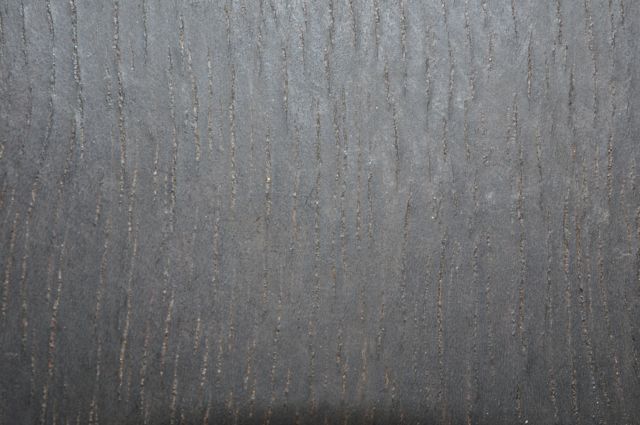 You can see the grain hidden below the black paint here.
You can see the grain hidden below the black paint here.


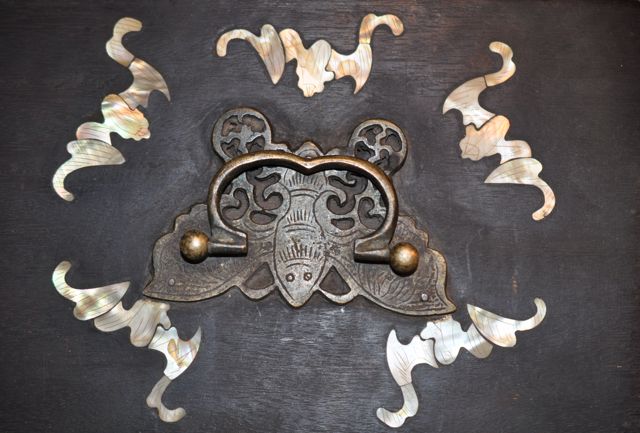
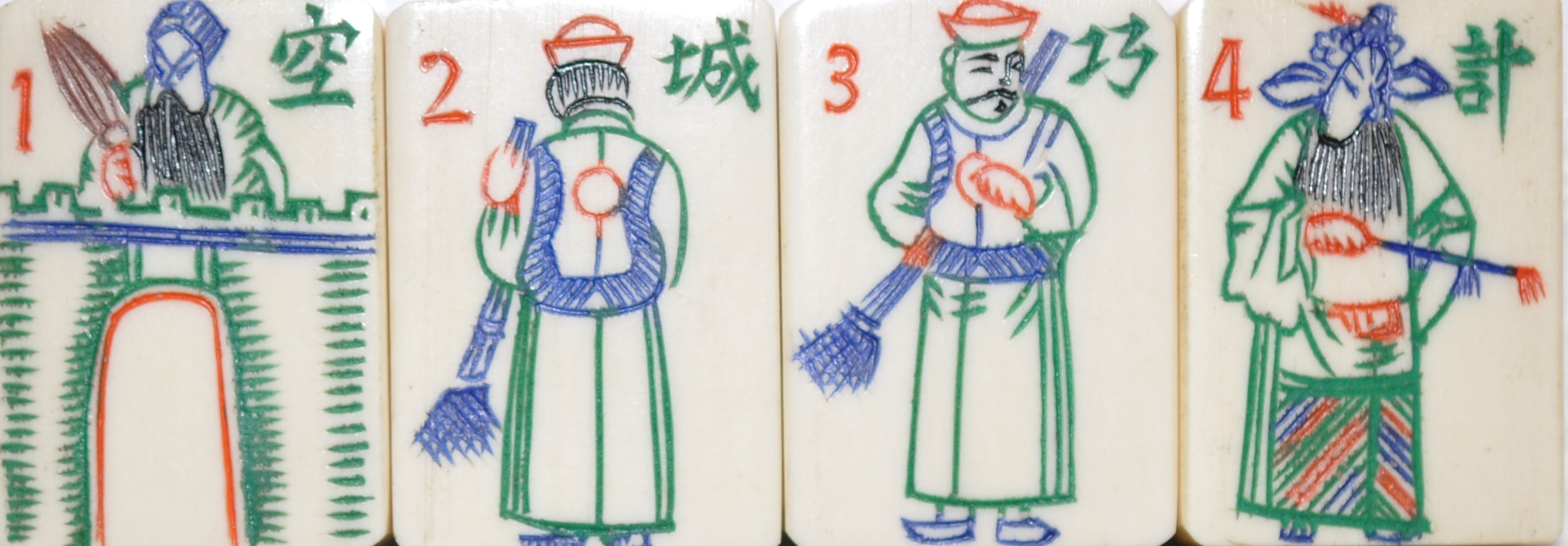
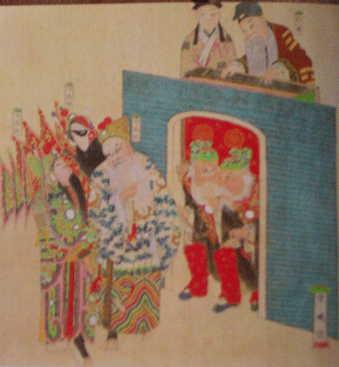
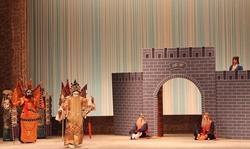
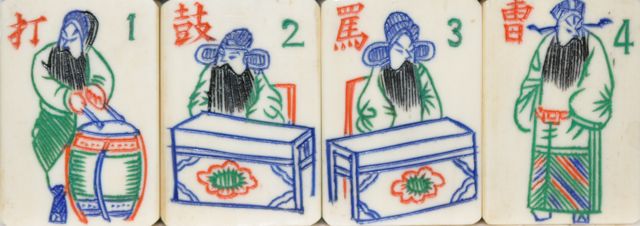
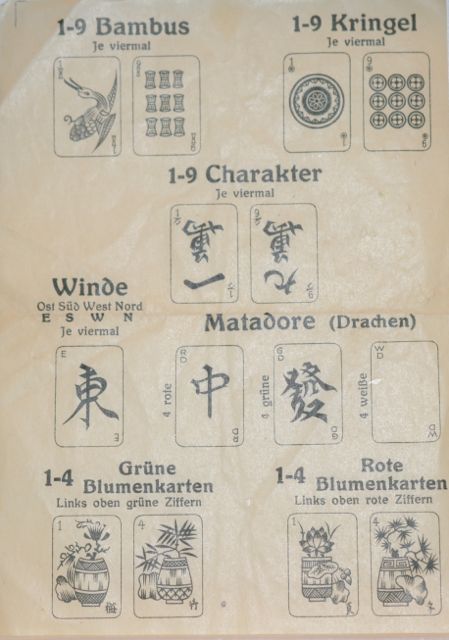
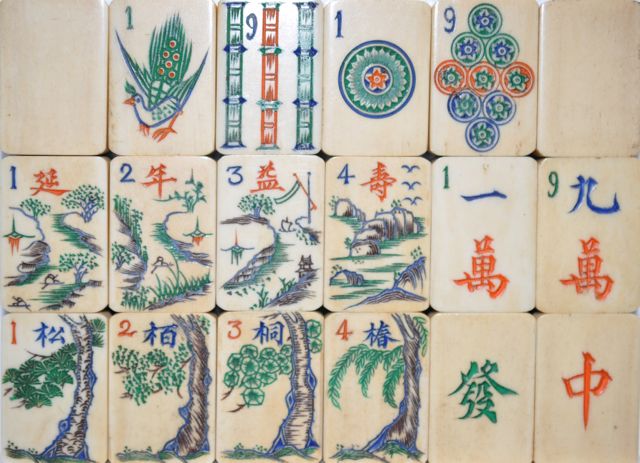
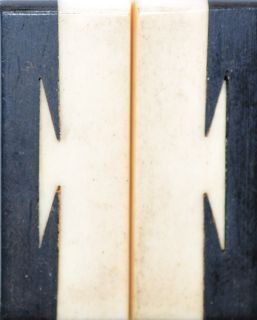

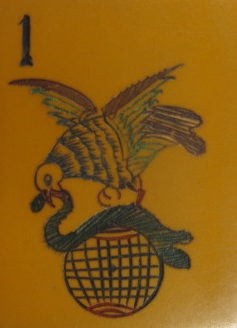
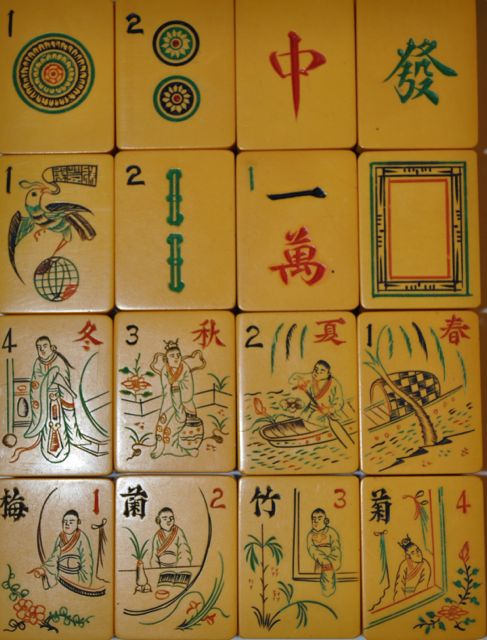
 This delightful hand carved Mahjong set comes in a wood box with a sliding top panel. I love the Dragon Joker tile (I was lucky, there are 8 carved ones) and the One Dot with the symbol for longevity, Shou, in the center. The top row of Flowers are flowers: plum blossom, orchid, bamboo, and chrysanthemum, flowers usually seen when flowers are shown. The bottom row is a bit different: the rich man and the pot of gold, and two gods: according to Wikipedia probably Lü Dongbin, who dresses as a scholar and carries a sword, and Guanyin, the Goddess of Mercy. I love the gold paint used for the rich man, the pot of gold, and the spots on the peacock's tail.
This delightful hand carved Mahjong set comes in a wood box with a sliding top panel. I love the Dragon Joker tile (I was lucky, there are 8 carved ones) and the One Dot with the symbol for longevity, Shou, in the center. The top row of Flowers are flowers: plum blossom, orchid, bamboo, and chrysanthemum, flowers usually seen when flowers are shown. The bottom row is a bit different: the rich man and the pot of gold, and two gods: according to Wikipedia probably Lü Dongbin, who dresses as a scholar and carries a sword, and Guanyin, the Goddess of Mercy. I love the gold paint used for the rich man, the pot of gold, and the spots on the peacock's tail.

